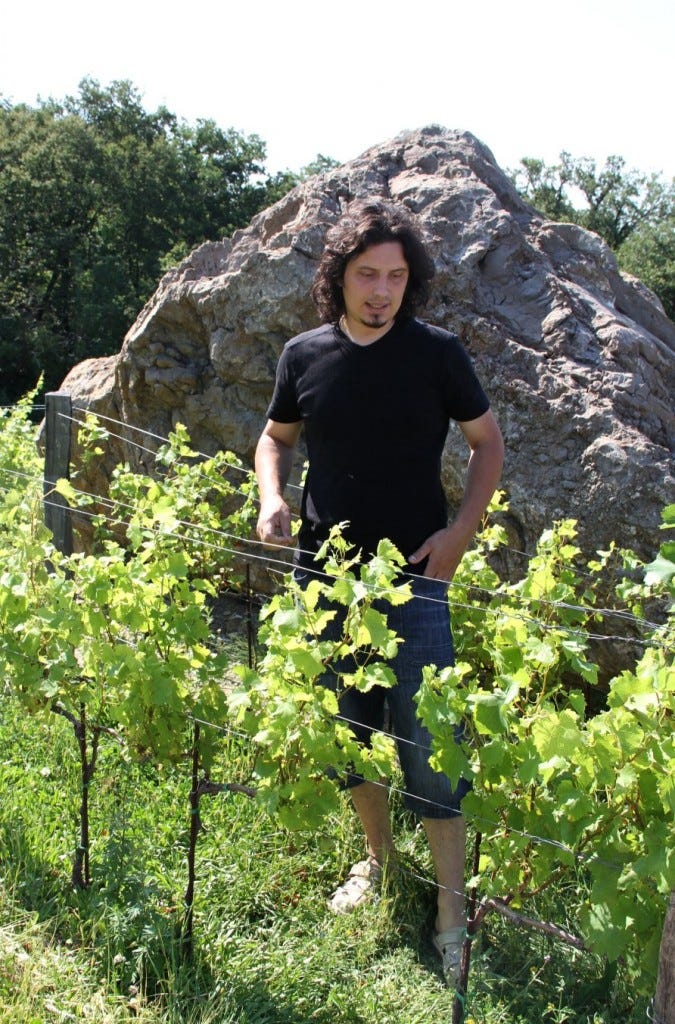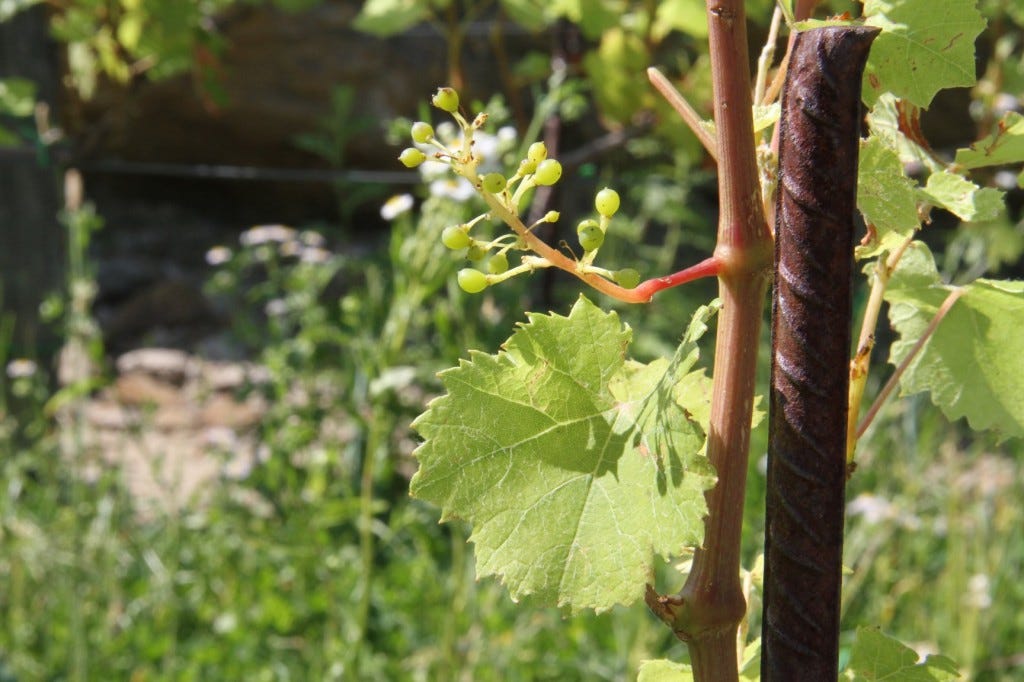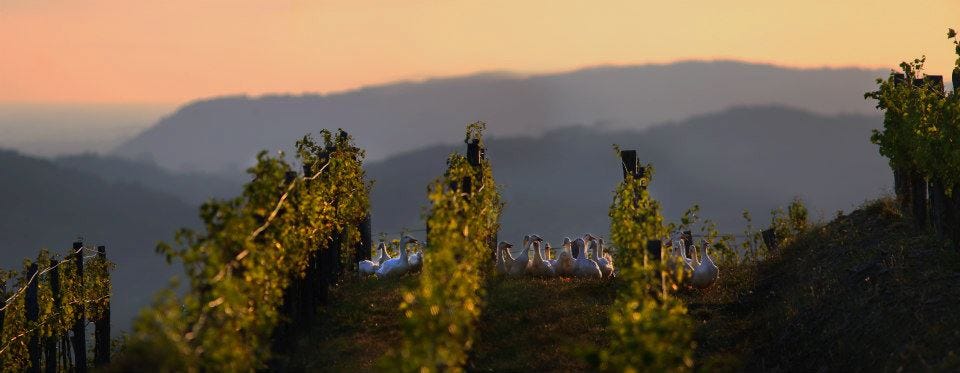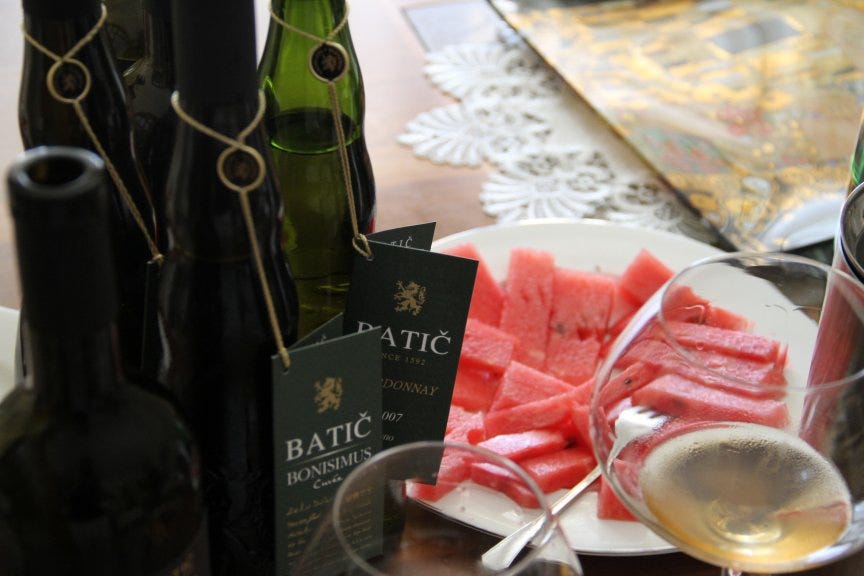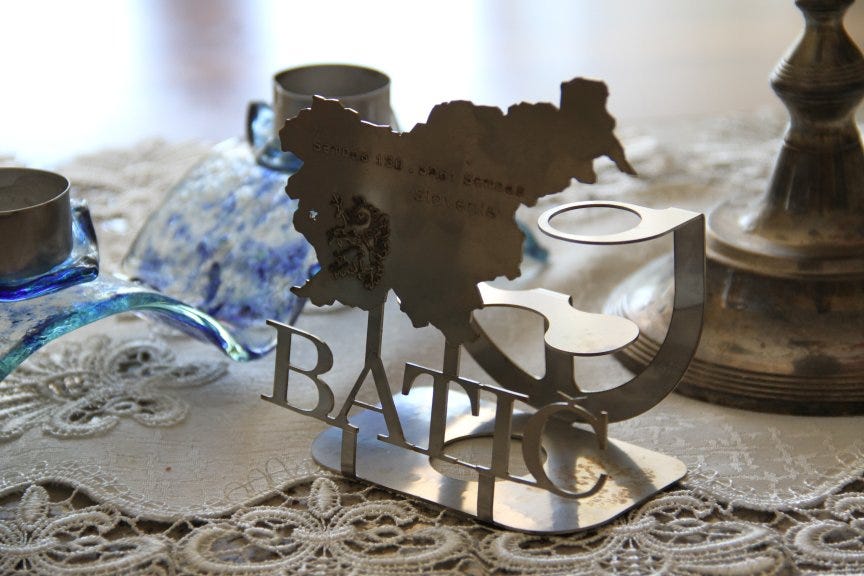Visiting Miha and Ivan Batič
A tale of permaculture and expressive orange wines from Slovenia's Vipava valley
There's an almost reactionary view that winemakers who practice organic or biodynamic viticulture end up having to be more, rather than less interventionist in the vineyard. The theory goes that instead of a single (noxious) spraying to knock out mildew/pests/anything else living, the organic or biodynamic vigneron will have to tramp through their vineyard countless times during the year, perhaps spraying copper or Bordeaux mixture 5-6 times in addition to endless manual weeding, green harvesting and so forth.
A visit to Miha and Ivan Batič's vineyards, in Slovenia's most Westerly Vipavska region, would debunk that fairly swiftly.
Miha Batič is laid-back and relaxed when he picks me up in nearby Gorizia, a town which is now split into two as it straddles the Italo-Slovenia border. In fact he's in better shape than me, owing to my late night confluence with an enthusiastic Enoteca-owner. We drive through the beautiful Vipavska Dolina (Valley), and suddenly it becomes clear why we're in a 4x4, as we turn onto a rough track and start ascending steeply.
Vitovska, a variety whose origins are so murky that not even Jancis Robinson's crack team can unravel whether it hails from Slovenia or Italy, is one of few indigenous species still cultivated here. Miha shows me some young Vitovska vines, not yet ready for production, but growing happily at around 400m altitude, with only the occasional paraglider for company. As we talk about the viticulture, he becomes increasingly passionate.
The Batič approach is to let nature take its course as much as possible. Miha tells me, pointing to a copse, if the trees and other plants can survive up here without human intervention, so can the vines. This means no irrigation, no fertilisers, no biodynamic preparations, nothing. We stop talking for a second to listen to the bucolic sound of crickets, birds and the wind. Miha intones rather poetically "we can listen to the orchestra of animals and this tells us that the vines are healthy". And indeed, on this gloriously sunny morning it feels like everything is in perfect harmony.
Well, almost everything.
Ducks on snail-patrol (Photo courtesy Ivan Batic)
We examine some small white snails clinging to isolated vineleaves. "In another month or two, the vines will be covered", Miha explains. And because the snails (Cernuella virgata) like to eat the leaves, this is not good at all.
Luckily there's a sensitive solution that will not trouble the chemical companies' order books. It comes on two legs and quacks. Ducks will roam the vineyard throughout autumn, reaching just high enough to pick off the offending molluscs, but not high enough to grab the grapes.
Pleasure in nature
I first came across Miha and Ivan's wines at London's Raw Fair 2012 - a celebration of natural and low-intervention winemaking bar none. I approached the Batič tasting table with a tired palate and wouldn't have believed I could be amazed by anything at the end of a long day. My interest was immediately piqued.
Note the attractively shaped bottles
The Batič philosophy in the winery is just as "hands off" as it is in the vineyard. A question about who (father or son) is the main winemaker is politely rebutted: "We don't think of ourselves as winemakers - we just let the wine make itself". In practical terms, this means wild yeasts, no additives, and no sulphur apart from perhaps at bottling time.
White wines are typically made with extended skin contact, lending them arresting and sometimes unfamiliar hues - take the wonderful burnished rose colour of the Sivi Pinot (Pinot Gris), for example. But these are not difficult, "hair shirt" wines for extreme naturalistas. Rather, the wines are voluptuous, complex and utterly pleasurable.
I barely get my teeth into the reds before we have to rush back to Gorizia (I'm on far too tight a schedule). We take a lightening dash round the winery, which is modest and functional. Everything in the Batič empire radiates passion, without artifice.
Miha sums it up perfectly: "When you drink, your soul must say thank you."
Tasting notes
The 100-point system is dead. Welcome to my infinitely simpler, less precise, more subjective and universally unknown rating system. I'll give one star to wines I particularly rate. Or two stars to wines that are off the scale. No stars doesn't mean bad.
Rebula 2011
A soft and full-textured wine, this is Friuli's Ribolla Gialla in Slovenian guise. The nose is aromatic, the finish is fresh. Plums and cooked apple.
Sivi Pinot 2009
7-10 days on the skins has given this wine the most wonderful burnished rose colour. Quite blowsy, with a strawberry coulis palate and dry nutty finish. Just a hint of the phenolics (tannins).
Pinela 2009
Creamy textured and structured, lemon fresh acidity and terrific balance, even at 14% alcohol.
* Chardonnay 2007
Kiwi fruit aroma, some nice minerality, green melon and cooked fruit. Very elegant and fresh. Made from 45 year old vines.
** Chardonnay 1999
From an extraordinary year, this is utterly unique. 15% alcohol, but not unbalanced in any way. Arresting flavours of sour apple, white blossom and green pepper (capsicum), with a nutty, bready undertow. Very dry, mineral and savoury finish with a hint of gunflint. Long and exciting.
Bonisimus 2007
A blend of Chardonnay, Pinot gris, Pinela and Rebula, with some of the wine aged in large Slovenian oak barrels. Slightly funky and floral nose, giving way to a rich, full-textured wine. Dry and complex, but rather "hot" on the finish. (14.5%)
* Zaria 2010
For me this is the more successful blend. And for the obscure grape variety nerds (hmm, that'll be me then), what a blend it is: 55% Pinela, 20% Zelen, 10% Rebula, 8% Vitovska, 4% Klarnica, 2% Chardonnay, 1% Yellow Muscat. The aromas range from plums to green tea and jasmine. The wine matures in old oak barrels, which are deliberately not topped up, lending a slight oxidative character - think of a Colheita port, but absolutely bone-dry. Dried apricots, caramel and lemons on the palate. Very complex, defiantly tannic, but somehow manages to be perfectly approachable.
* Pinela 2008
Matured for two years in slovenian oak, which has lent the wine a spicy, vanilla-infused aroma, with a hint of iced coffee. Fresh red berry fruit flavours and a hint of apple. Charming.
* Cabernet Franc
Quite rich for Cab Franc, but with attractive stalkiness that keeps it fresh - and a slight saline edge to the finish. Matured in old barriques - the oak influence is subtle and doesn't overawe.
Since this visit in 2012, there have been big changes at the Batič winery. Miha now prefers to harvest later and to make what I would term far more mainstream style wines. The winery has also refocused on red wine.


